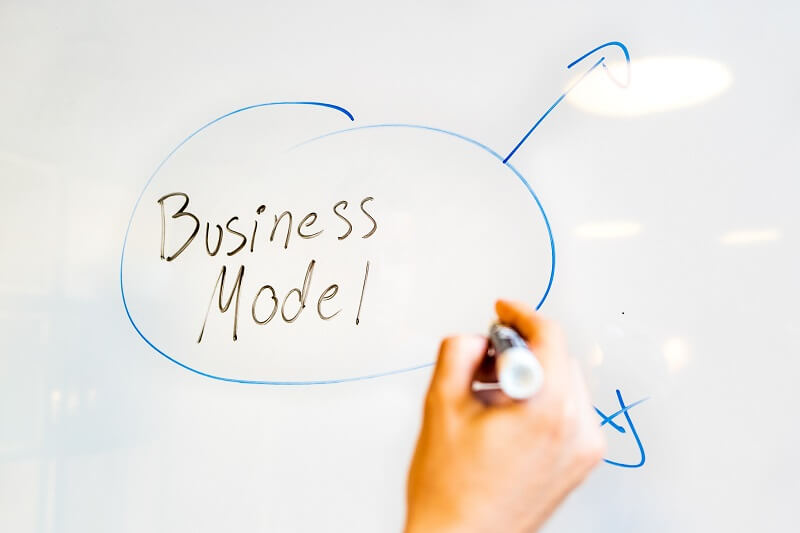
Social enterprise models
Social entrepreneurship can be difficult for beginners.Indeed, hundreds of social businesses worldwide make a difference. This section of our website covers a few!As you might expect, every social enterprise has

Social entrepreneurship can be difficult for beginners.Indeed, hundreds of social businesses worldwide make a difference. This section of our website covers a few!As you might expect, every social enterprise has

This post begins a series on coffee shop business models—UK-based ones.This guide is helpful if you’re starting or running a coffee shop but need a purpose.A company’s mission and target

Startups require many decisions. Which business model should I choose? Choosing how to sell your product, who to sell to, and how to make money is difficult. However, your business

If you’ve planned a company, you know there are many moving parts. It’s hard to find a central perspective. Luckily, the business model canvas helps! The definition of a business

The pandemic has devastated American restaurants and food services. The National Restaurant Association reported in mid-September that six months after COVID-19, nearly 1 in 6 restaurants (almost 100,000) had closed

Is the Business Model just what users will pay for? That too. The business model is complex and requires numerous answers. Business models answer these questions: The business model shows

Are you looking for ways to unlock your long-term business value? If you nod, remember that a business model can streamline your business process. A business model defines, understands, and

A business model outlines revenue generation. If you want to start a business, determine what model will support your goals and incorporate its design into your business plan and market

Business models are a company’s profit strategy. It lists the business’s products or services, target market, and expected costs. New and established businesses need business models. They help startups raise
Business models are a company’s profit strategy. It lists the business’s products or services, target market, and expected costs. New and established enterprises need business models. They help startups get financing, hire talent, and inspire employees.
Established companies must adapt their business model to stay ahead of trends and problems. Business models help investors and potential workers evaluate organizations.
A business model is a company’s profit strategy.
Models typically comprise business items, target audiences, and expected expenses.
Retailers, manufacturers, fee-for-service, and freemium businesses exist.
Pricing and costs are business model levers.
As an investor, check if the product meets a market need.
A business model is a high-level strategy for making money in a certain market. Value propositions are key to business models. This describes a company’s products and services and why customers want them, ideally in a way that sets them apart from competitors.
A company’s business model should include initial costs and financing sources, target customers, marketing strategy, competitive analysis, and income and expense estimates. The plan may also outline partnerships with established companies. An advertising business may benefit from a printing company referral arrangement.
Successful firms meet customer needs at a competitive and sustainable price. Many companies update their business models to adapt to shifting market conditions.
Investors should learn how a company produces money before investing. Examine the company’s business model. The business model may not reveal a company’s future. However, a business model-savvy investor can better interpret financial data.
Many companies need to pay more attention to the costs of funding the business until it becomes profitable while creating business plans. Product introduction costs need to be more adequate. Businesses must continue until revenues exceed expenses.
Analysts and investors analyze business models by looking at gross profit. Revenue minus COGS equals gross profit. Comparing a company’s gross profit to its main competitor or industry shows its business model’s efficiency and efficacy. Gross profit alone can mislead. Analysts desire cash flow or net income. Gross profit minus operating expenses shows the business’s true profit.
Pricing and costs drive a business model. Companies can boost pricing and obtain cheap inventory. Both boost gross profit. Analysts prioritize gross profit while assessing a business plan. Gross profit indicates a solid company model. The management team may be responsible for high expenses, which can be fixed. Analysts believe that the best company models can run themselves.
As many business models as businesses, traditional business formats include direct sales, franchising, advertising-based, and brick-and-mortar. Internet retailers that partner with NBA teams or brick-and-mortar stores are hybrid models.
The following business models may fit into numerous categories.
Most people encounter the retailer model. Retailers end supply chains. They buy finished items from manufacturers or wholesalers and deal with clients.
Example: Costco Wholesale
Manufacturers use internal labor, machinery, and equipment to source and make items. Manufacturers can make personalized or mass-produced items. Manufacturers sell to distributors, retailers, and customers.
Example: Ford Motors
Fee-for-service businesses sell labor and services instead of items. Fee-for-service businesses charge by the hour or by the agreement. Fee-for-service companies often provide specialized information that requires training.
Example: DLA Piper LLP
Subscription-based businesses seek to convert customers into loyal customers. Offering a product with recurring payments for a fixed benefit does this. Subscription business models are popular for tangible items like monthly agriculture/produce box deliveries. Digital enterprises mostly use them for software.
Example: Spotify

Freemium models introduce clients to basic, limited-scope items. After using their service, the corporation tries to sell consumers a more expensive, premium product. Although a consumer may stay on freemium indefinitely, a corporation seeks to explain the benefits of upgrading.
A corporation may bundle products to sell many items to a single buyer if it worries about customer acquisition costs. Bundling tries to upsell existing consumers. Multi-product discounts can encourage this.
Ex: AT&T
Marketplaces receive payment for hosting a business platform. This business model makes transactions easier, safer, and faster.
Example: eBay
Affiliate business models rely on marketing and platform reach. An entity promotes a product for a company and earns payment. They may receive a fixed payment, a portion of sales from their promotion, or both.
Example: Social media influencers like Lele Pons, Zach King, and Chiara Ferragni.
This business strategy, called after the original product, sells a durable product below cost to generate high-margin sales of its throwaway component. Razor blade firms may give out pricey blade handles under the “razor and blade model” to encourage people to buy razor blades.
HP printers/ink
A reverse razor blade business model sells a high-margin product upfront instead of using companion items. For utilization, low-cost or free partner products are given. Since product use is not profitable, this approach promotes upfront sales.
Example: Apple (iPhones + apps)
Franchises use business plans to extend and replicate a company. Franchisers help new franchisees finance, market, and run their food, hardware, or fitness businesses. The franchisee pays a percentage to the franchisor.
Example: Domino’s Pizza
Some companies use a pay-as-you-go concept, billing based on usage. The service provider may charge a fixed price and a monthly amount dependent on consumption.
Example: Utility firms
Brokerages match buyers and sellers without selling goods. When a deal closes, brokers usually get a cut. Brokers are prevalent in real estate, construction, and freight.
Ex: ReMax
There is no “one size fits all” company plan. Different experts may advise you when starting a business and planning your model. Steps to build a plan include:
Know your audience. Most business model ideas start with a problem definition or audience/target market identification. A good business model will help you tailor your product, messaging, and approach to your audience.
Define it. You must know your target and your problem. Hardware stores sell home repair supplies. Restaurants nourish people. If your services or products are optional, your firm may be able to handle it.
Know your products. Consider your audience and problem before offering anything. How does your expertise complement what you want to sell? This business model stage adjusts the product to meet market needs and your capabilities.
List your needs. Your product is chosen to analyze your company’s challenges. This encompasses product-specific and operational issues. To determine your launch readiness, document these needs.
Key partners. Most companies use partners to succeed. Wedding planners may partner with venues, caterers, florists, and tailors to improve services. Manufacturers should assess their material suppliers and how important their relationship is.
Plan monetization. We have yet to discuss your company’s revenue. A business model is complete with a revenue model. This includes choosing a business model strategy. After assessing your client’s demands, a different type may make more sense.
Test your model:
Companies sell more than things. It’s an ecosystem that needs a plan for selling, charging, and creating value. A business model illustrates how a company creates long-term consumer value. After creating a business model, a company should have clearer goals and a financial outlook.